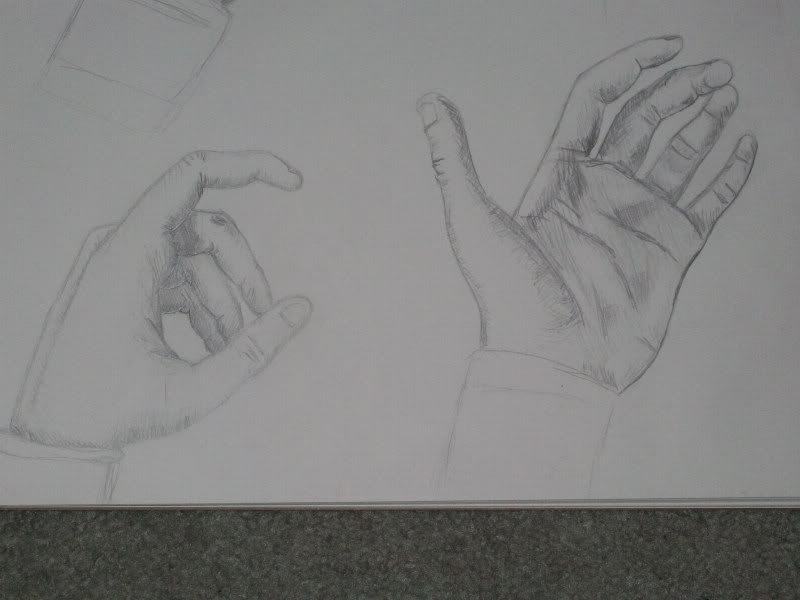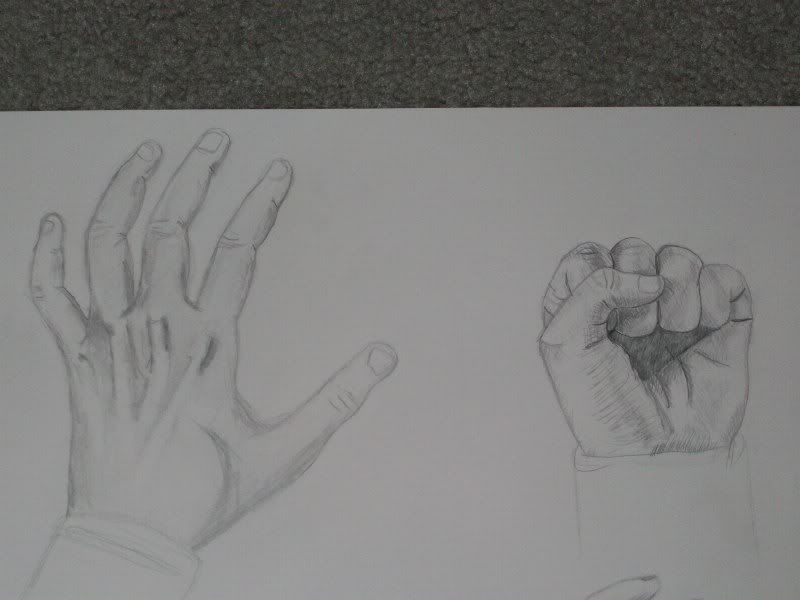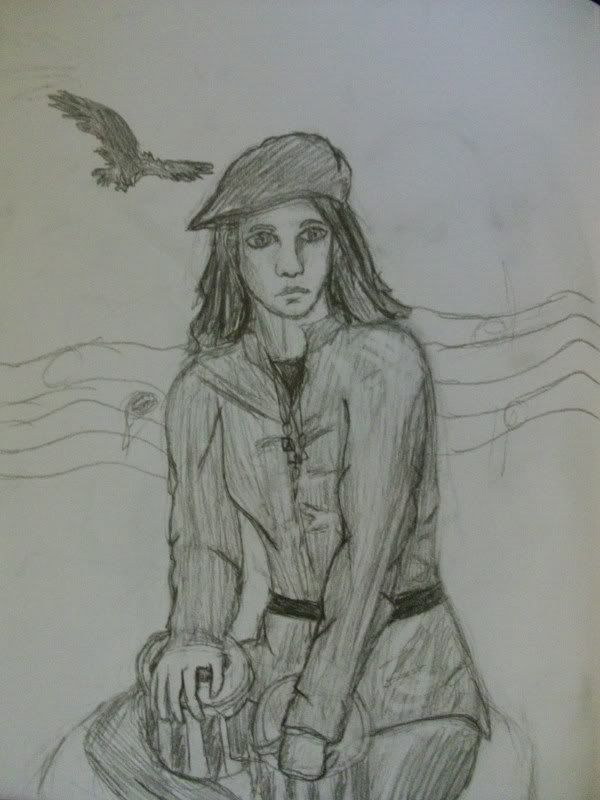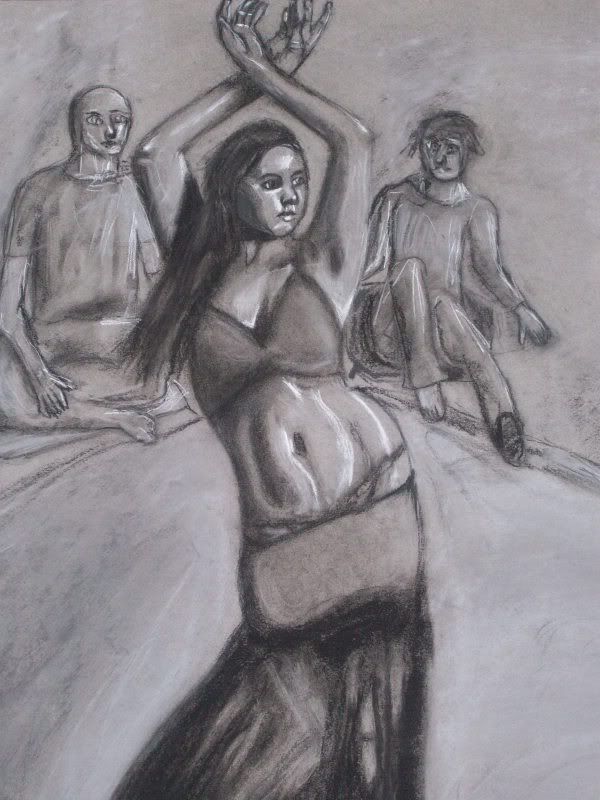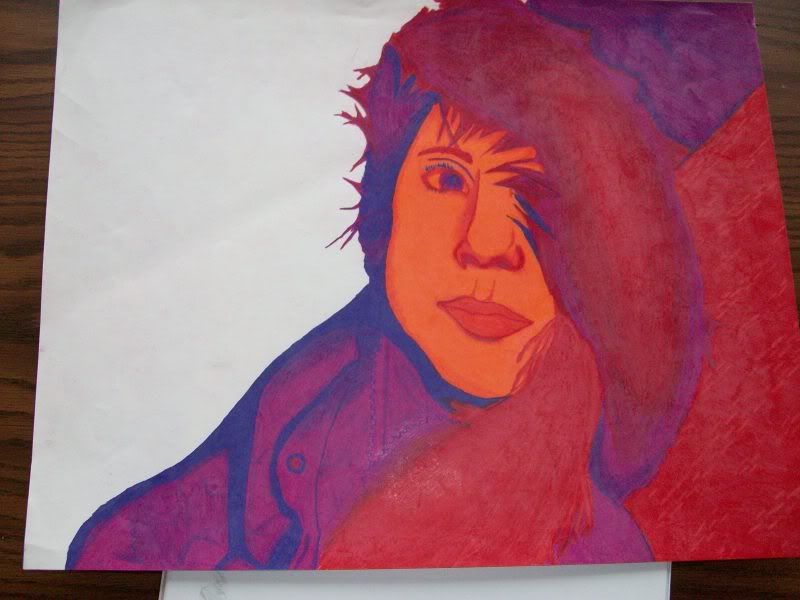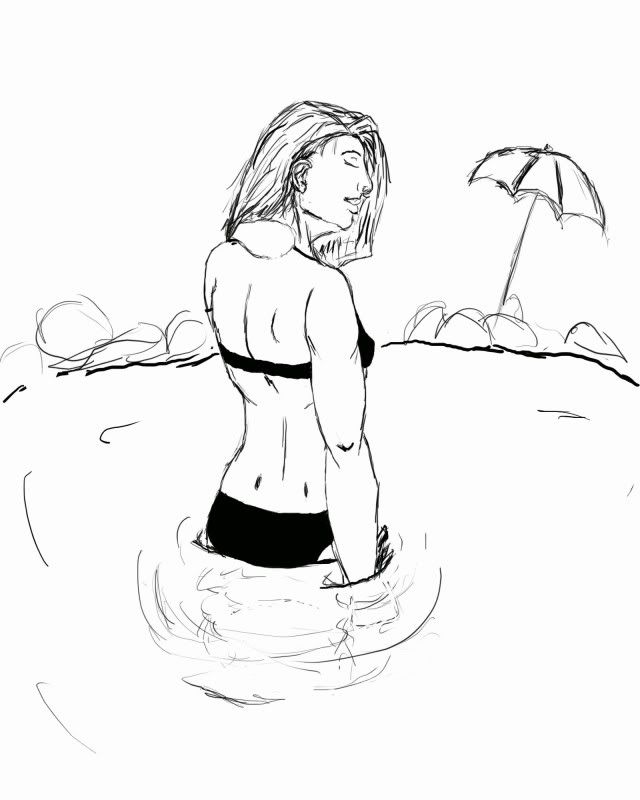Ok, here is my guide for how to draw hands. Someone requested this and I said OK! Can do! So here we go!
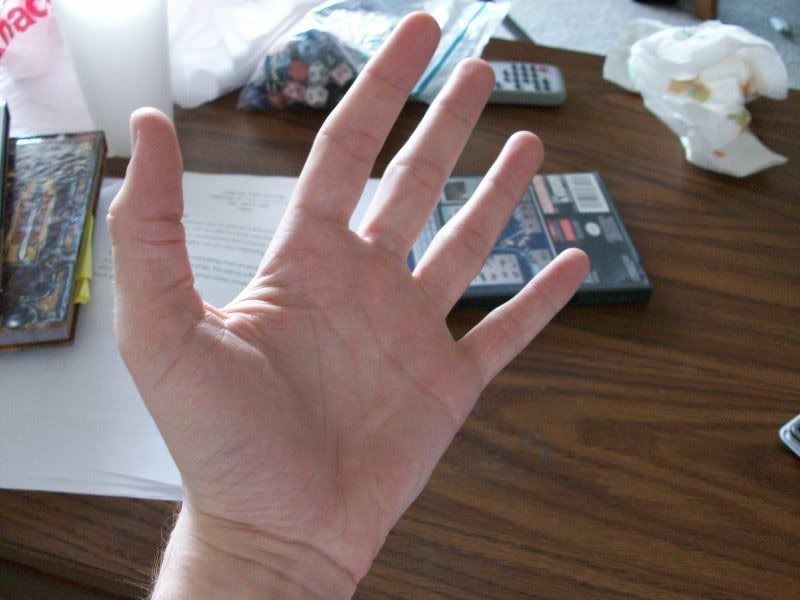
First of all we need a hand to be able to draw it. So I have provided one. TO learn to draw hands well the best way is to work from your own hand. Working from life is always better than working from a picture.
Ok. The first thing to remember when drawing hands is that they are 3-D Figures. They aren't flat, they have dimensions and thus need to be drawn in that way. You always need to draw human aspect from the inside out when you first begin. So, start out by drawing a box to represent the palm.
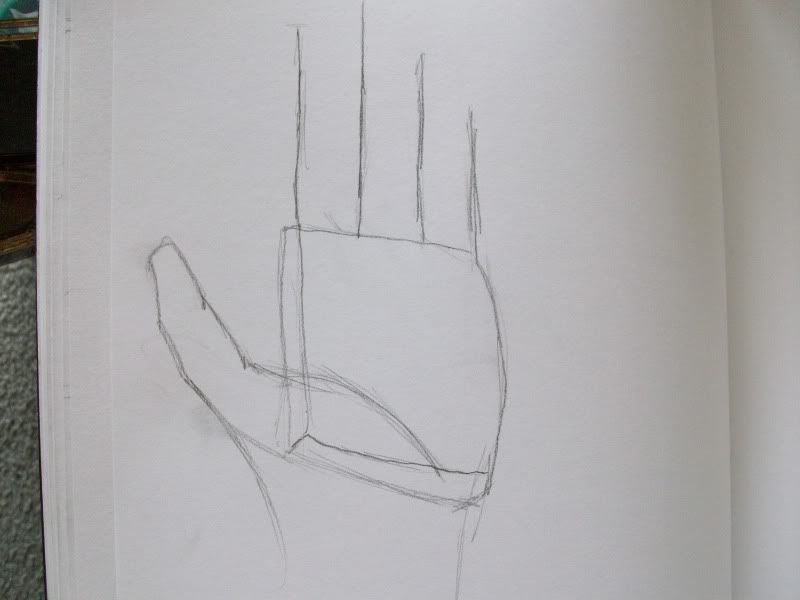
Once we have the palm down we can add the postions of the fingers as I have done above. Just putting down simple lines to show where the center of the finger, the bone, is located will do. I went ahead and did the outline of the thumb for a reason. The thumb is a weird and different aspect of the human hand. It had a large muscle that connects into the hand and helps shape it. Without knowing where this muscle sits you will have a hard time making your thumbs look correct.
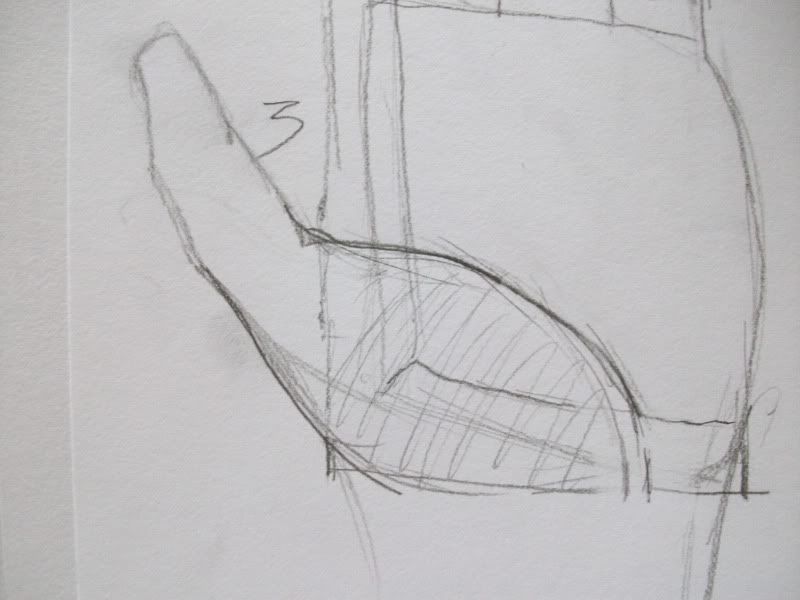
Here I have outlined how the large muscle at the abse of the thumb lays. Whenever drawing palm shots most of this muscle will be visible.
Ok, next we need to learn the wonderful 2/3 rule of the human body. The 2/3 rule states that every part of you body is proportional in a 2/3 to something else. Also, parts of your body are proportional to a 1/1 ratio. This is very important to learn when drawing any part of the human body becuase you can find a ratio for one part of your body to compare to get the correct sizing for something else. On the hand, the 2/3 ratio is very present and noticeable.
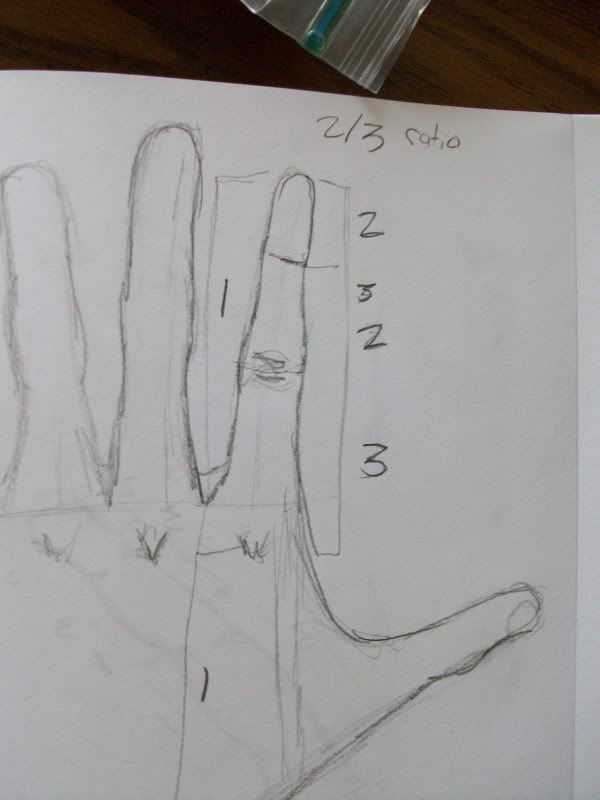
Here I have drawn the 2/3 ratio for the fingers. The first joint is 2/3 the size of the second joint. The second joint is 2/3 the size of the final section of the finger, to the knuckle. Finally, the hand also shows a 1:1 ratio. When viewed from the
back of the hand the fingers are as long as the palm. I have draw all of that in to show the ratios of the hand.
The proportions of the fingers changes slightly when viewd from underneath. This is due to the little slope we all have between our fingers. View your hand from the side to see that the back of your hand slopes upwadrs to meet with the larger section of your palm. That is the webbing between you fingers. That tiny detail changes the proportions of the finger when viewed from the palm.
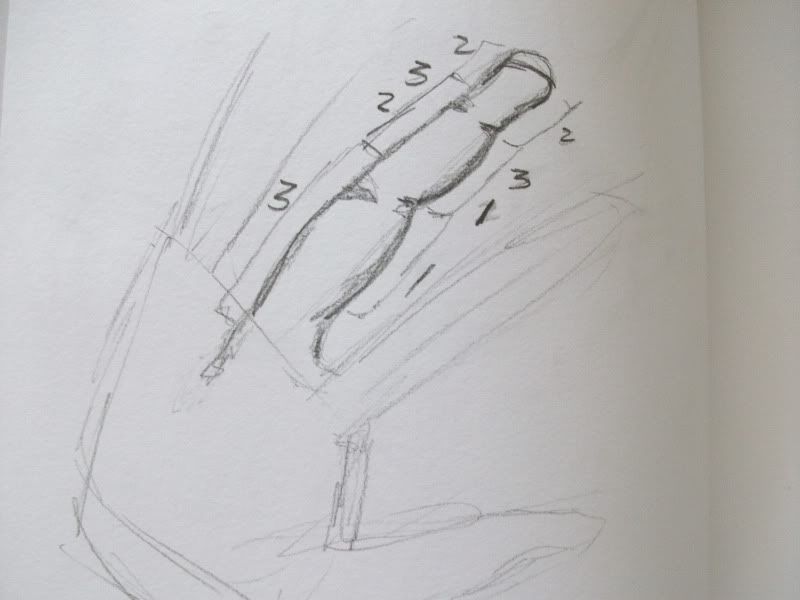
Here I have drawn the hand from the view to see the different proportions. The back of the finger remains with the same 2/3 ratio, while the bottom of the finger changes slightly. The first section of the finger remains the same, with a 2/3 size ratio. But the middle section and the final section share a 1:1 ratio on this side of the hand, due to the size of the palm. Also, now, the fingers when viewed from palm side have a 2/3 size ratio. The finger is 2/3 the size of the palm when viewed from here. The following is a picture show this.
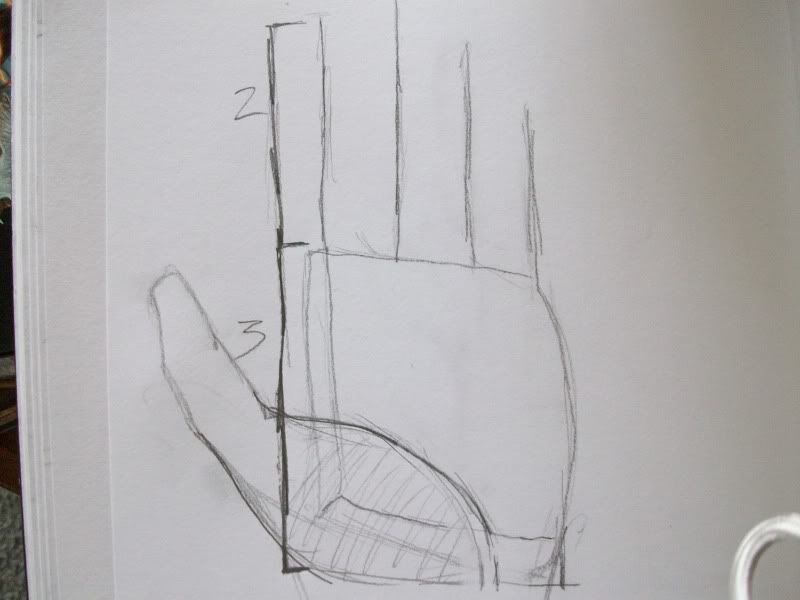
The other last thing to learn about drawing hands is the pads of the fingers. The pads of the fingers follow the ratios of the finger when viewed from the palm side. The first one has one bend in it, where as the second pad as two.
That is the basics to drawing hands! Once you get these steps and ratios down you will next need to learn how the muscles and bones sit in the hand, for they often change the shadows and highlights on the back of the hand. Now go foward and draw draw draw your hands.
